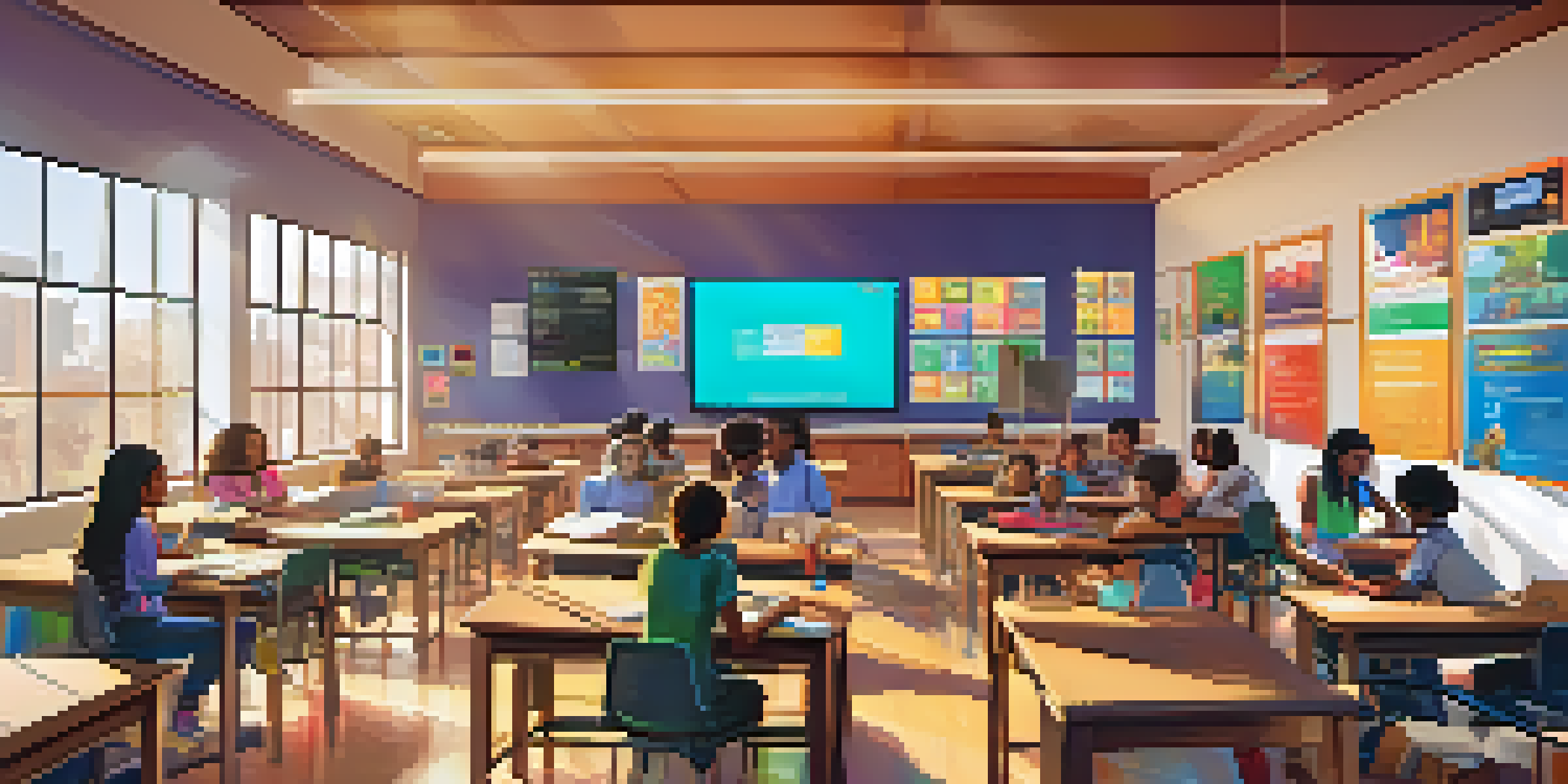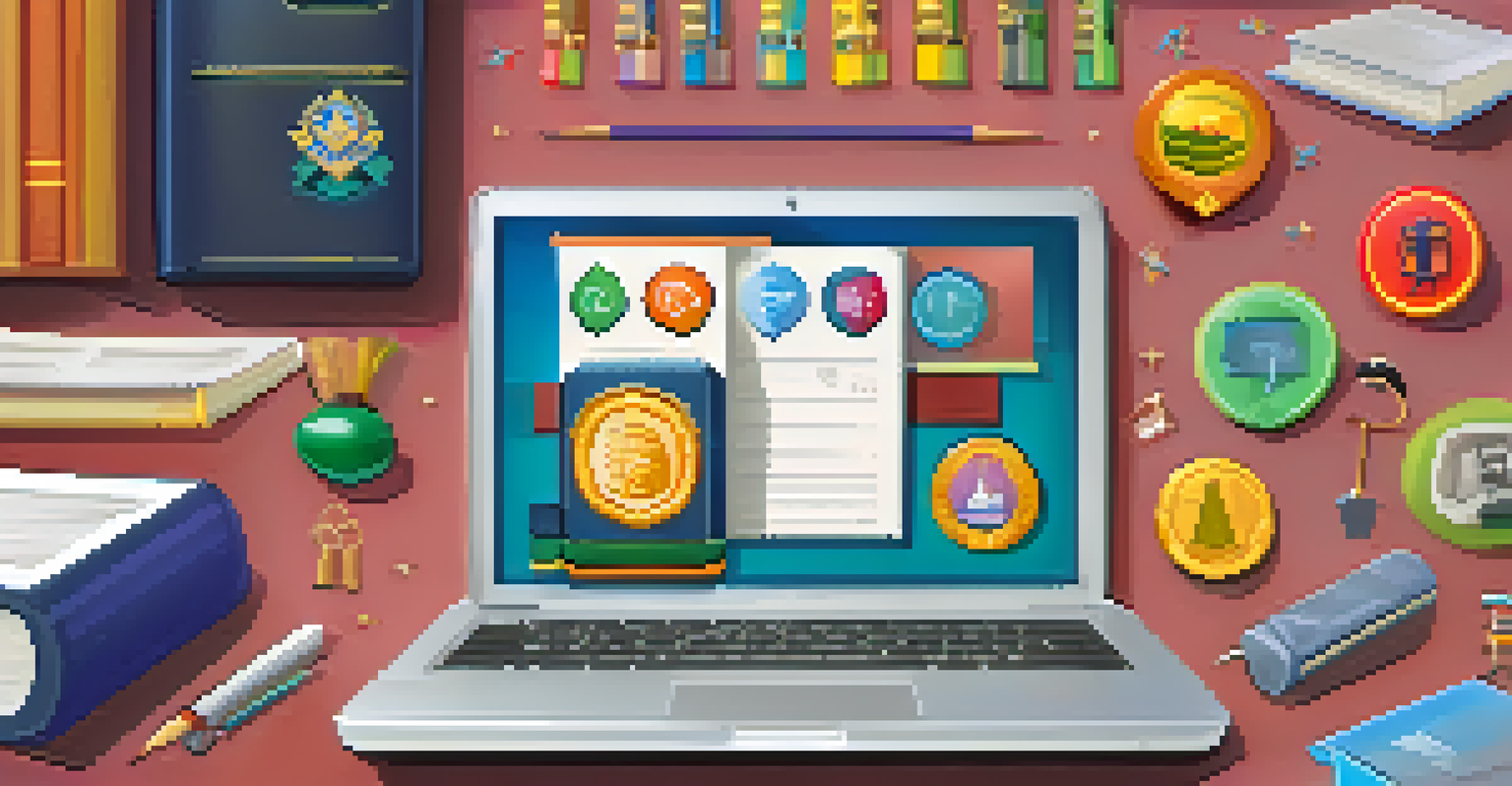Gamification: A Collaborative Approach to Learning in Schools

Understanding Gamification and Its Importance
Gamification refers to the use of game design elements in non-game contexts, like education. By incorporating features such as points, badges, and leaderboards, educators can make learning more engaging. This approach taps into students' natural competitive spirit, motivating them to participate actively in their education.
Games give us a sense of purpose and accomplishment, and can be a powerful tool for education.
The importance of gamification lies in its ability to enhance motivation and engagement among students. Traditional teaching methods can sometimes feel monotonous, leading to disengagement. When gamification is used, lessons become more interactive, encouraging students to collaborate and learn from each other.
Moreover, gamification can lead to better retention of information. By transforming lessons into challenges or quests, students are more likely to remember what they've learned. This process not only makes learning fun but also fosters a collaborative environment where students support one another.
The Benefits of Collaborative Learning
Collaborative learning is an educational approach that involves students working together to solve problems or complete tasks. This method not only promotes teamwork but also encourages the sharing of diverse ideas and perspectives. When students collaborate, they learn from each other’s strengths and weaknesses, leading to a richer educational experience.

In a collaborative setting, students develop essential social and communication skills. These skills are crucial for their future careers, as most workplaces value teamwork and collaboration. Additionally, working together fosters a sense of belonging and community among students, which can enhance their overall learning experience.
Gamification Boosts Student Engagement
Incorporating game elements in education enhances motivation and makes learning more interactive for students.
Gamification complements collaborative learning by introducing a fun element to teamwork. For example, when students work together to achieve a common goal in a game-like setting, they are more likely to engage with each other and contribute positively to group discussions. This synergy between gamification and collaboration can create a dynamic learning environment.
Incorporating Gamification into the Classroom
To successfully integrate gamification into the classroom, teachers can start by identifying learning objectives and how gamification can support them. Simple methods such as earning points for completing assignments can motivate students. Teachers can also create team-based challenges that encourage collaboration while still aligning with curriculum goals.
Collaboration allows teachers to capture each other's fund of collective intelligence.
Another effective strategy is to use digital platforms that facilitate gamified learning experiences. These platforms often include tools for tracking progress, offering rewards, and enabling collaboration among students. By leveraging technology, teachers can enhance their gamification efforts and create an interactive classroom environment.
Moreover, it's essential for teachers to gather feedback from students about their gamification experiences. This feedback can help educators understand what works and what doesn’t, allowing them to adjust their strategies accordingly. Continuous improvement ensures that gamification remains effective and relevant to students' needs.
Examples of Gamified Learning Activities
One popular example of gamified learning is the use of escape rooms in the classroom. Teachers can create puzzles and challenges based on the curriculum that students must solve collaboratively to 'escape.' This not only makes learning enjoyable but also emphasizes teamwork and problem-solving skills.
Another effective gamification strategy is the use of role-playing games (RPGs). In these activities, students assume roles related to the subject matter and work together to navigate scenarios or challenges. This immersive approach can make historical events or scientific concepts more relatable and engaging.
Collaborative Learning Enriches Education
Working together allows students to share diverse perspectives and develop essential social skills.
Additionally, educators can implement digital badges and leaderboards to recognize student achievements. For instance, awarding badges for specific skills or milestones encourages students to strive for excellence while fostering a sense of community among peers. These elements can drive healthy competition and collaboration simultaneously.
Challenges of Implementing Gamification
While gamification offers many benefits, it also presents challenges for educators. One significant challenge is ensuring that the gamified elements align with educational goals. If not carefully designed, gamification can become a distraction rather than a tool for learning.
Another challenge is the varying levels of student engagement. Not all students respond to gamification in the same way. Some may thrive in competitive environments, while others may feel overwhelmed or excluded. Teachers must be mindful of these differences and create a supportive atmosphere for all.
Moreover, the integration of technology can pose logistical hurdles. Not every school has access to the necessary resources or technology to implement gamified learning effectively. Educators must be creative in finding solutions that work within their specific environments to ensure all students can benefit from gamification.
The Role of Educators in Gamified Learning
Educators play a crucial role in the successful implementation of gamification in the classroom. They must not only design engaging activities but also facilitate collaboration among students. By guiding discussions and encouraging teamwork, teachers can maximize the benefits of gamified learning.
Additionally, teachers need to foster a growth mindset among students. This mindset encourages students to perceive challenges as opportunities for learning rather than obstacles. When students embrace this perspective, they are more likely to take risks and engage fully in gamified activities.
Teachers Are Key to Gamification Success
Educators must design engaging activities and foster a supportive environment to maximize the benefits of gamified learning.
Lastly, ongoing professional development is essential for educators to stay updated on the latest trends in gamification. By participating in workshops or online courses, teachers can learn new strategies, share experiences, and refine their approaches to gamified learning, ultimately benefiting their students.
The Future of Gamification in Education
The future of gamification in education looks promising as more educators recognize its potential. With ongoing advancements in technology, we can expect to see even more interactive and immersive learning experiences. Virtual reality (VR) and augmented reality (AR) could soon play a significant role in gamified learning, providing students with unique opportunities to engage with content.
Moreover, as educational institutions continue to prioritize student-centered learning, gamification will likely become an integral part of curricula worldwide. This shift will not only make learning more enjoyable but also help students develop crucial skills for the 21st century, such as critical thinking, collaboration, and creativity.

Ultimately, the collaborative approach fostered by gamification can transform classrooms into vibrant learning communities. As educators and students work together in a game-like environment, the possibilities for innovative and effective learning experiences are limitless.